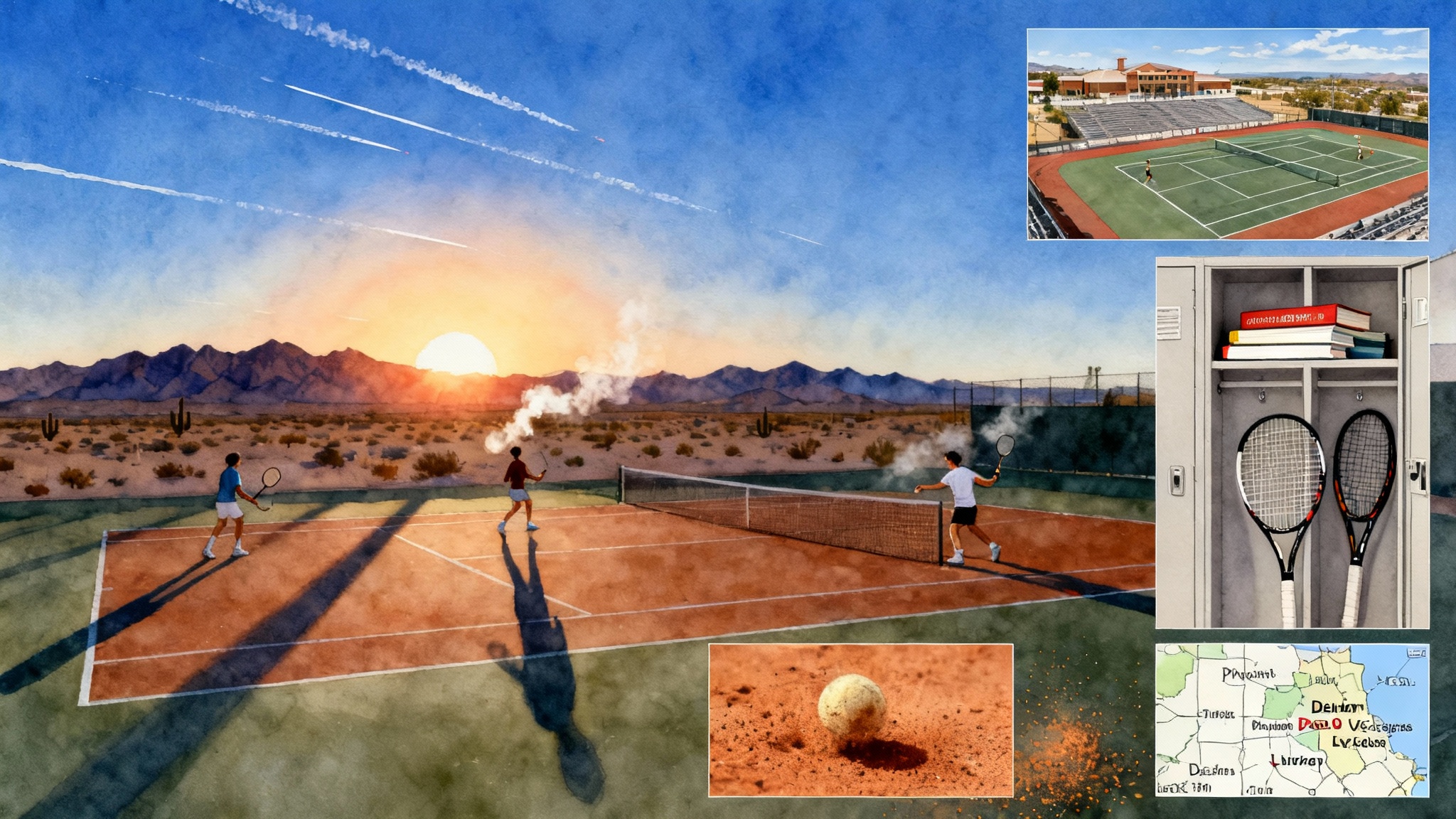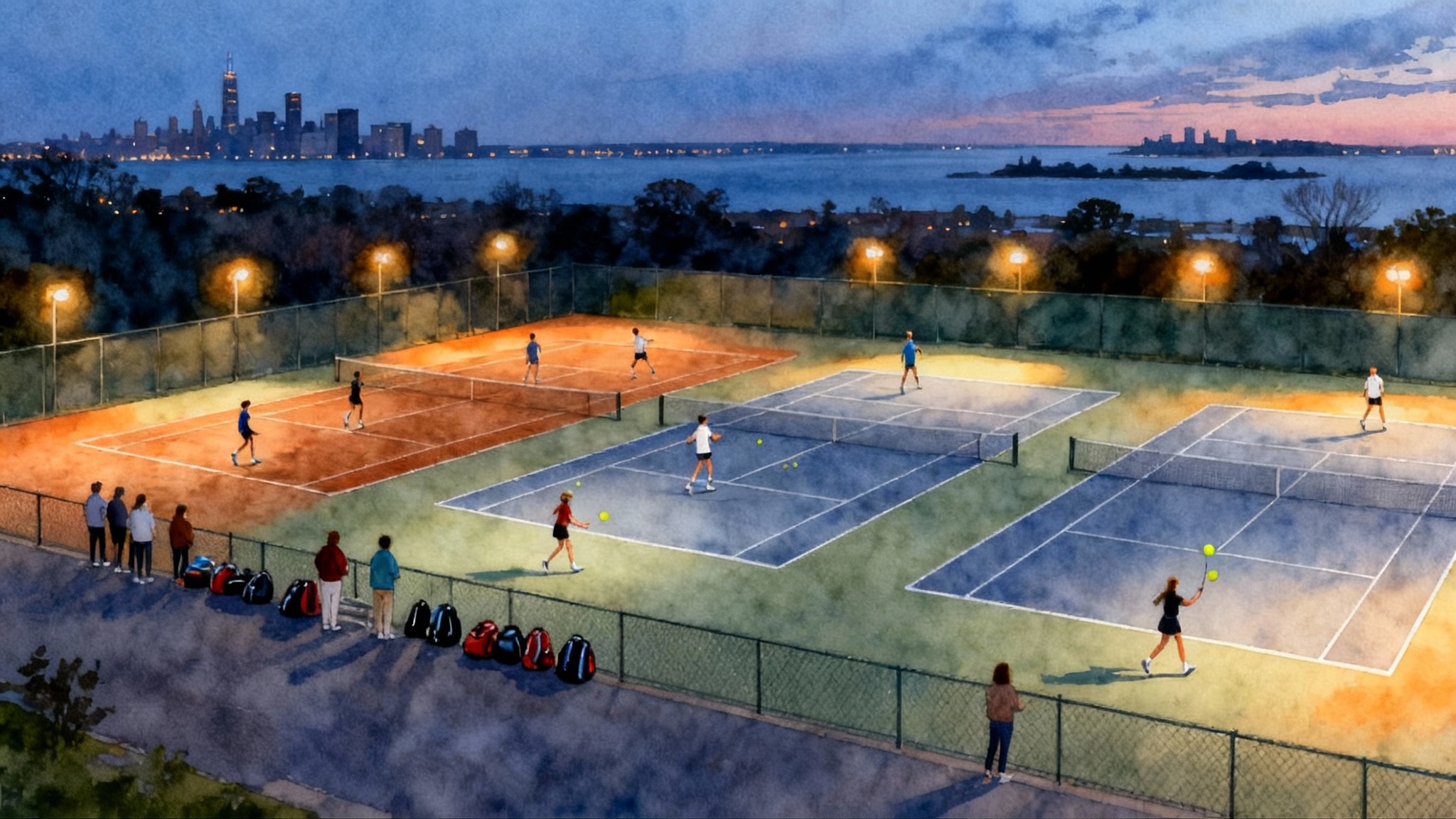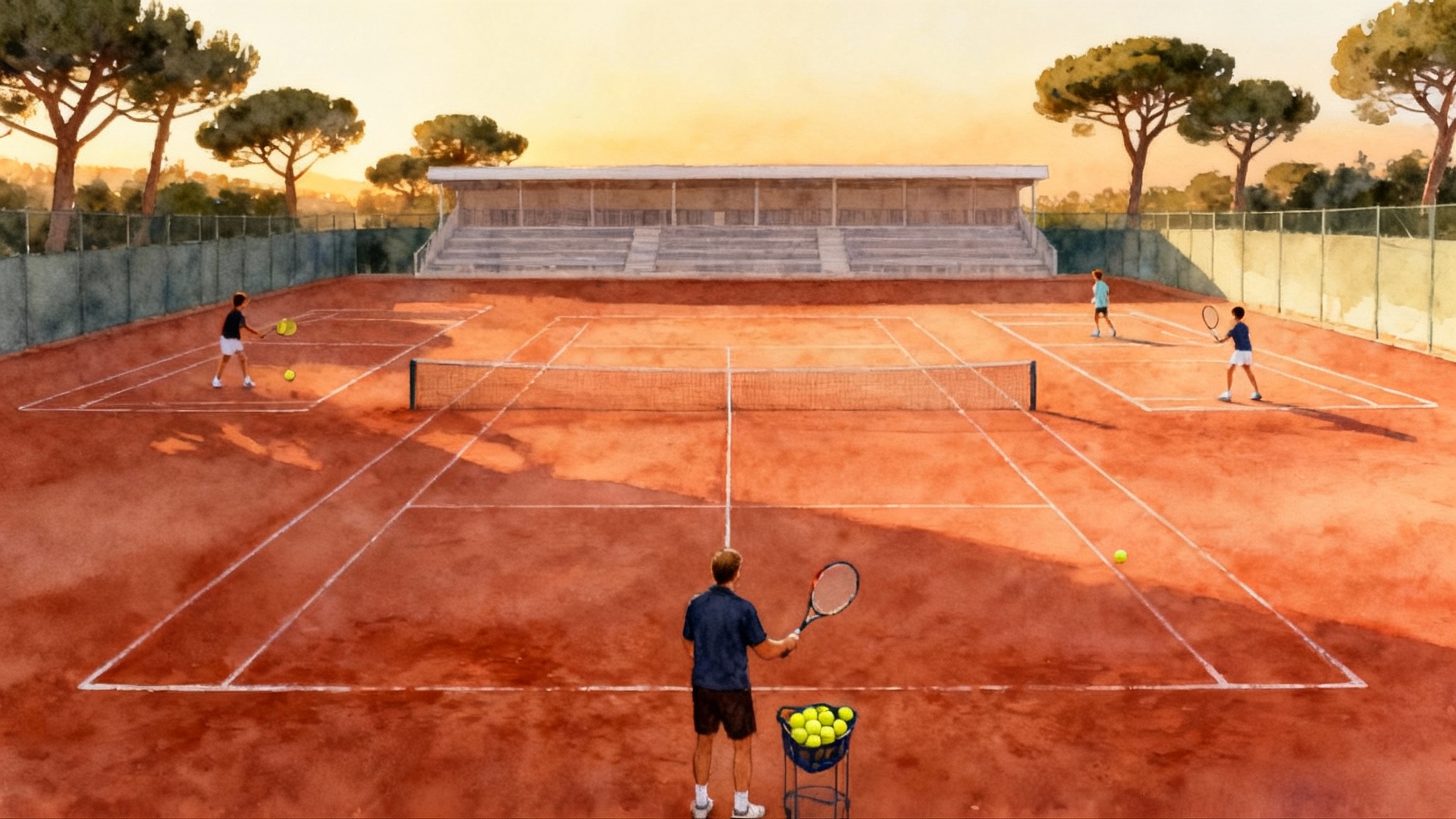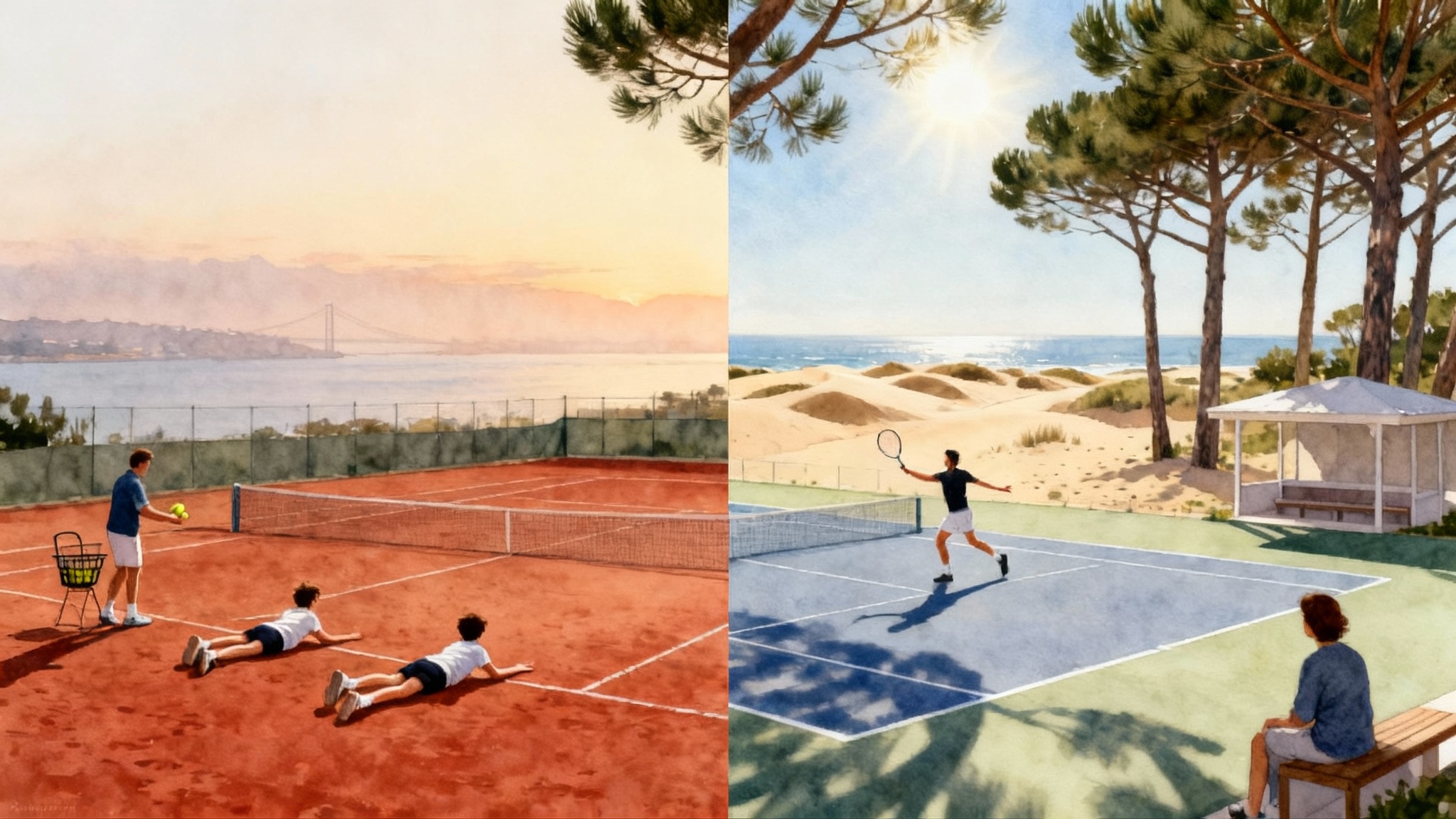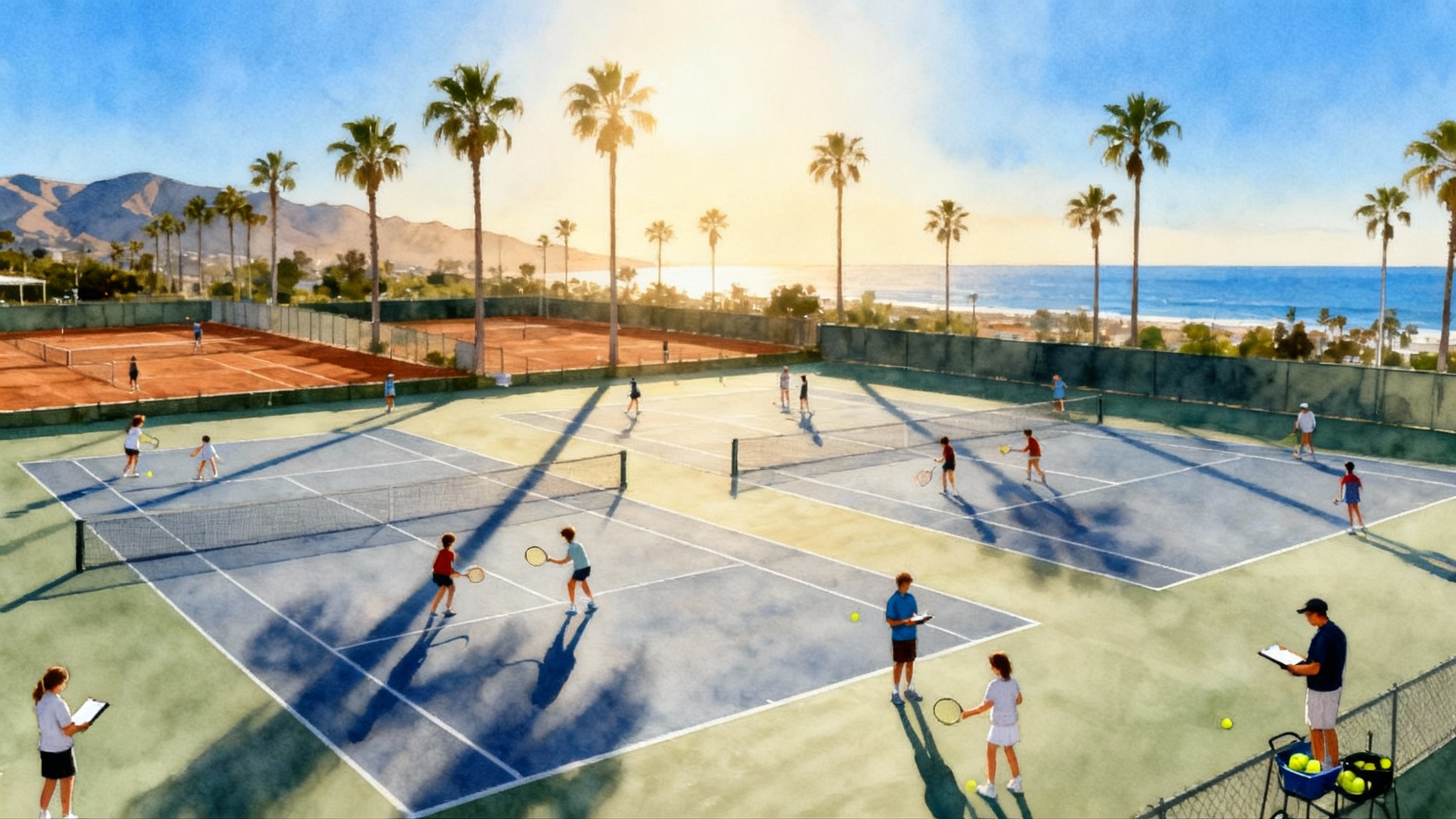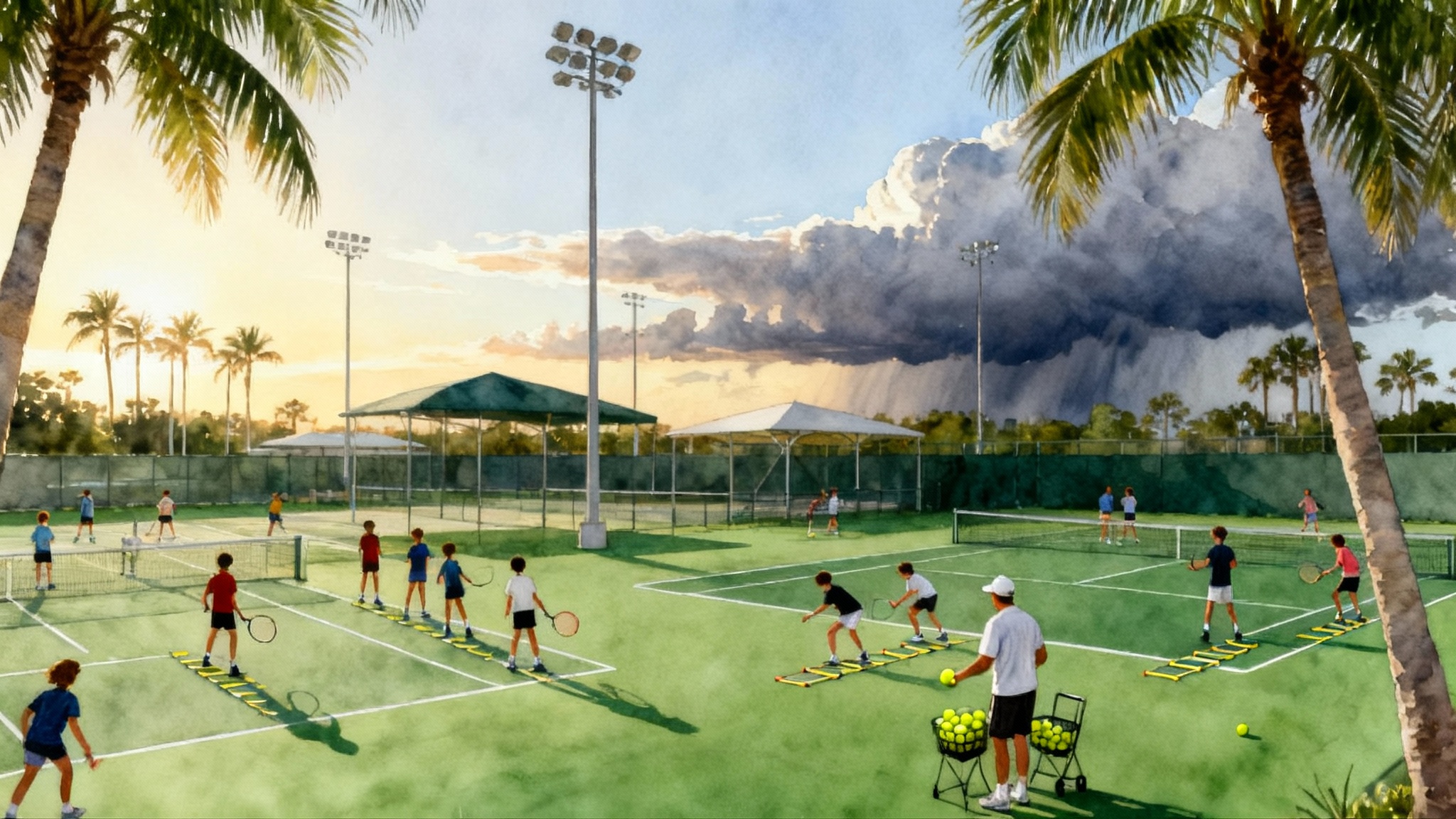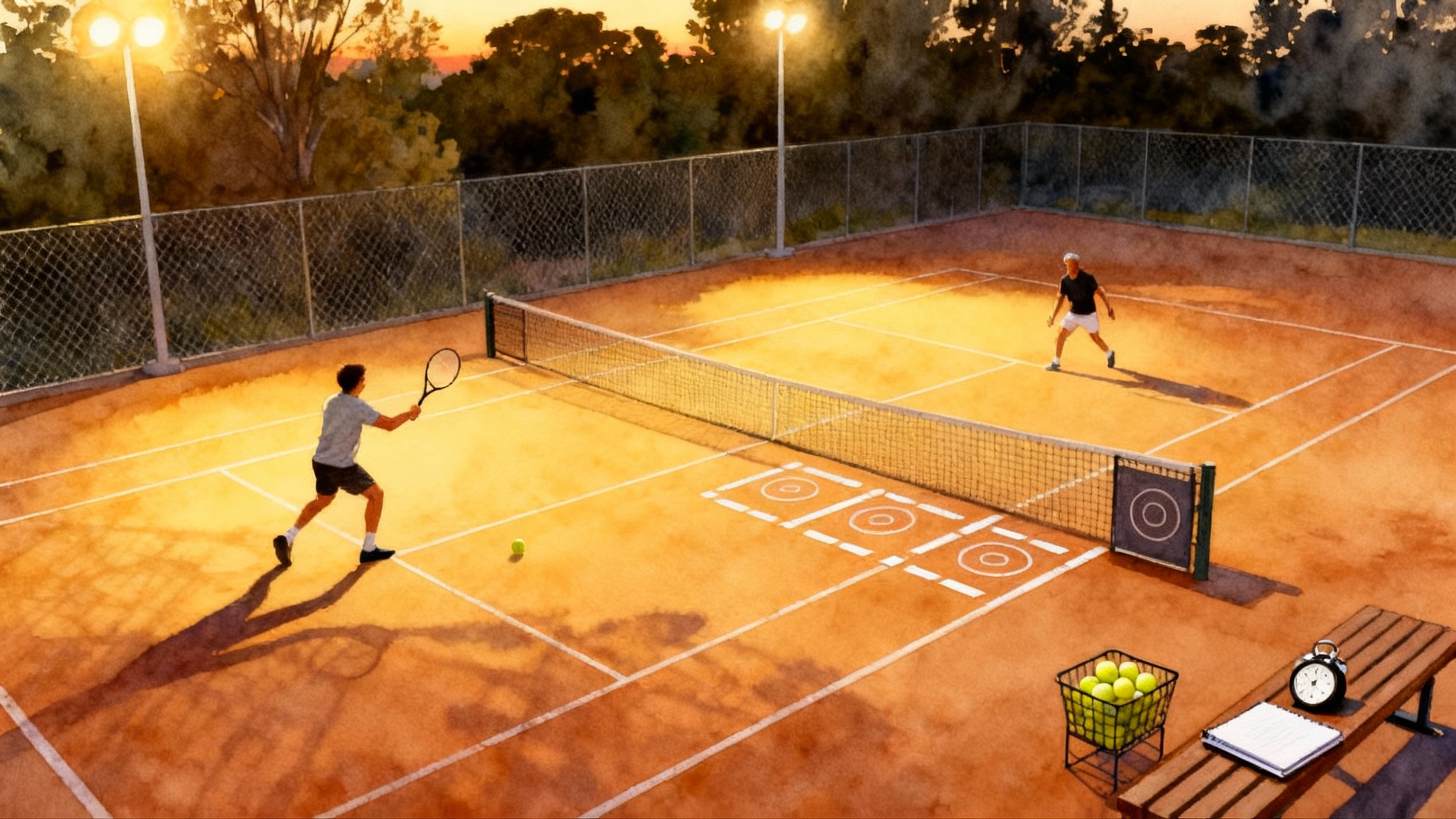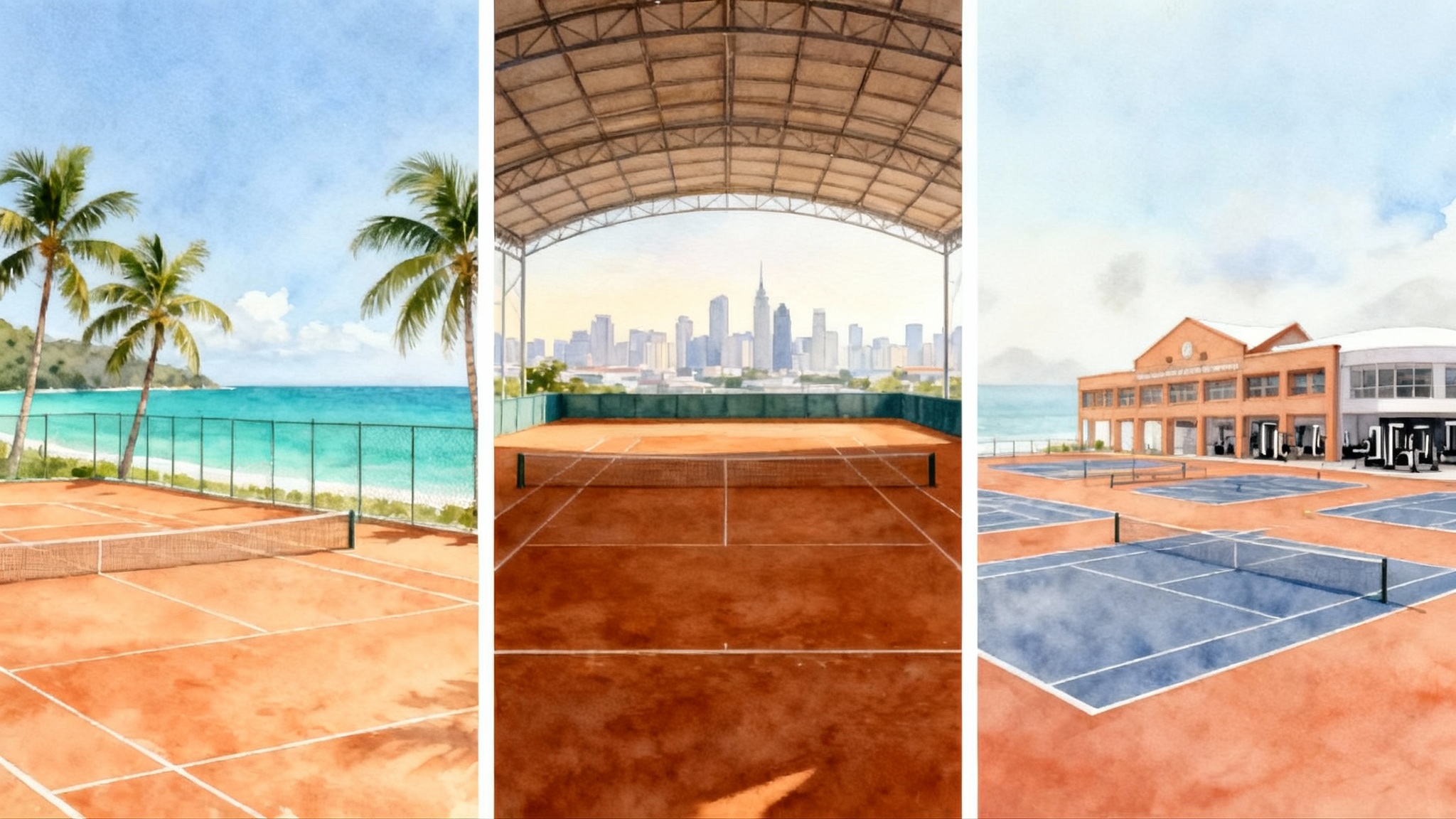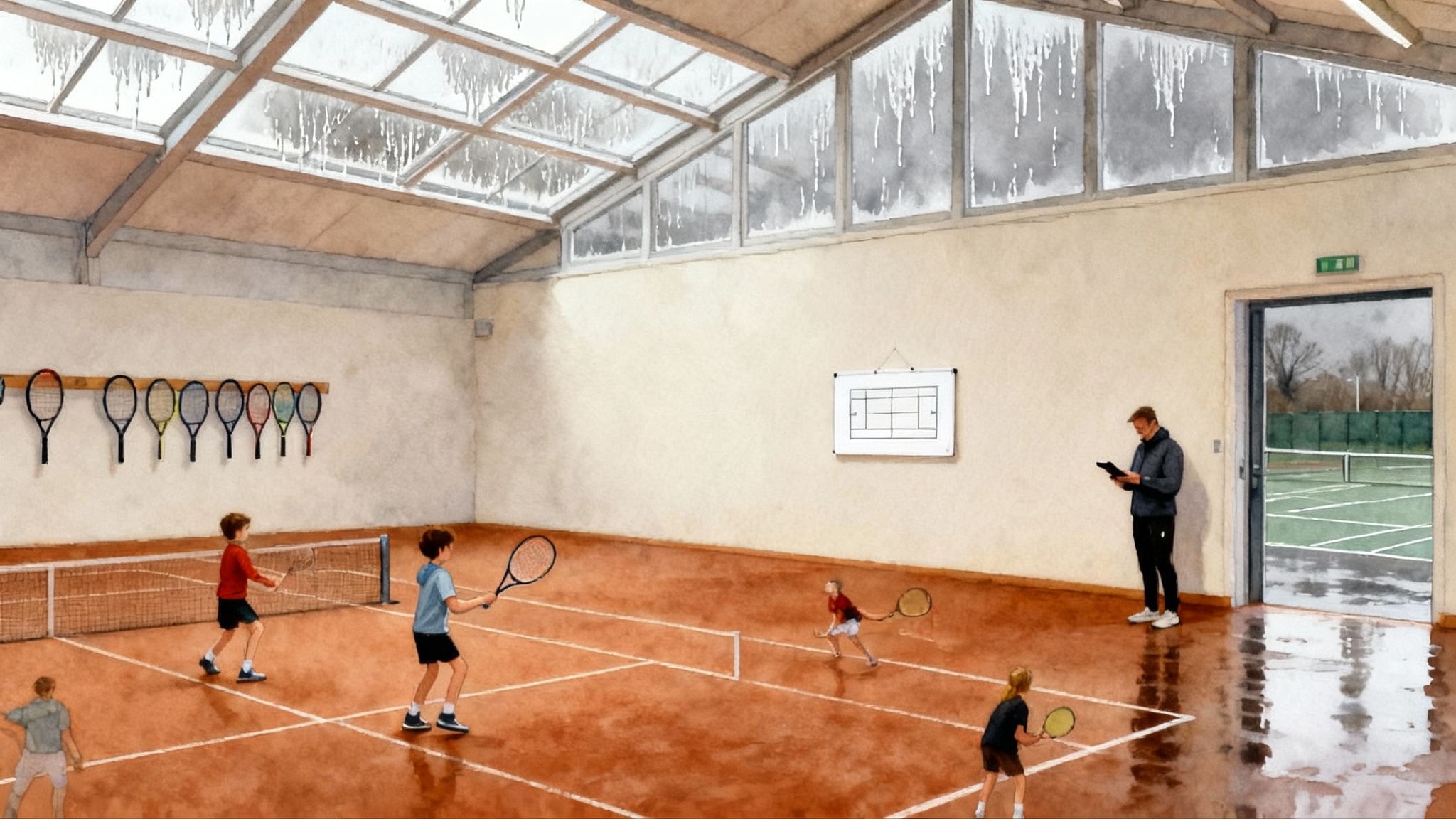Best Tennis Academies in Italy 2025–2026: Rome to Turin
A buyer’s guide to Italy’s top tennis academies. Compare Rome Tennis Academy and Torino Tennis Academy with Piatti and Vavassori on clay volume, coaching ratios, boarding, academics, costs, UTR and ITF access, and travel logistics.
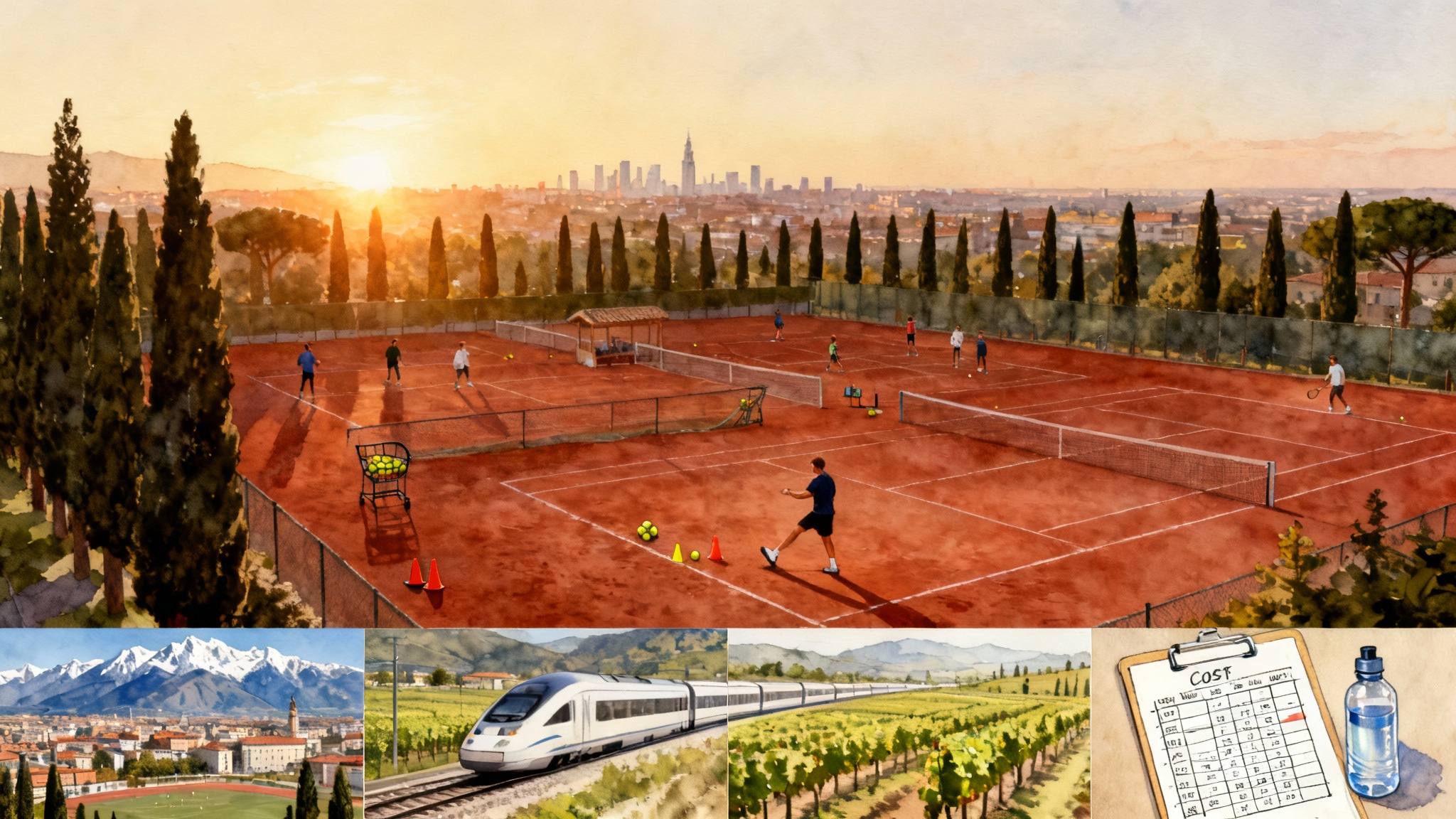
Why Italy, why now
Italy is a training sweet spot for juniors and gap‑year players who want a heavy clay block, smart footwork habits, and dense tournament options within train distance. The country’s junior calendar is full, travel is simple, and the coaching culture is built around patient point construction. This guide compares Rome Tennis Academy and Torino Tennis Academy head‑to‑head, then places them alongside two other strong Italian choices that families often shortlist. You will also find sample two and four week itineraries, suggested fits by player profile, and clear cost bands so you can plan with eyes wide open.
First, the two programs most readers ask about:
- Rome Tennis Academy in Lazio, founded by Vincenzo Santopadre and colleagues, with eight courts across clay and indoor hard plus on‑site performance services. See the official Rome Tennis Academy overview page.
- Torino Tennis Academy in Piedmont, a performance‑minded school supported by the Master Club structure, active across junior, pro, and adult pathways. Review the official Torino Tennis Academy site.
For independent profiles with logistics, notes, and contacts, see the internal pages for Rome Tennis Academy profile and Torino Tennis Academy profile.
We also include two widely referenced alternatives for comparison: Piatti Tennis Center in Bordighera and Vavassori Tennis Academy in Palazzolo sull’Oglio. The matrix below pulls together what families usually need to decide.
Quick comparison matrix
These snapshots reflect 2025 conversations with families, public information, and typical Italian market practices. Use them as a shortlist tool, then request current written quotes before you commit.
| Academy | Clay volume and footwork patterns | Coaching ratios | Boarding and academics | Annual costs, training only | UTR and ITF access | College placements | Travel logistics |
|---|---|---|---|---|---|---|---|
| Rome Tennis Academy, Rome | High clay exposure. Emphasis on open‑stance defense into neutral, slide‑plant timing, cross‑court height, and pattern play that builds the forehand. Indoor hard used for pace and first‑strike reps. | Typical 1:3 to 1:4 in academy blocks, 1:2 for add‑on private sessions. | On‑site athlete housing capacity and partner lodging nearby; academics generally via local private schools or accredited online programs. | Common 2025 band: €18,000 to €28,000 for full‑time training without academics. | Dense Lazio matchplay, frequent regional events, straightforward entries to UTR match days; ITF juniors within train reach in spring and early summer. | Regular college guidance via staff and partner counselors; past links to U.S. programs reported by families. | 30–45 minutes to Rome Fiumicino or Ciampino; high‑speed rail to Florence, Bologna, Milan for tournament swings. |
| Torino Tennis Academy, Turin | Predominantly clay. Heavy on recovery steps, inside‑out patterns, and neutral ball quality to set up forehands. Winters leverage covered courts when available. | Typical 1:3 to 1:5; small‑group custom blocks for tournament prep. | No large dorm on site; families use vetted apartments or host options. Academics commonly online or local international schools. | Common 2025 band: €12,000 to €22,000 for full‑time training without academics. | Strong Piedmont and Liguria circuits, plus access to UTR events; ITF juniors in northern Italy most of the year. | Growing track record placing players in Italian and European universities; U.S. placements case‑by‑case. | 20–30 minutes to Turin airport; 50–60 minutes by train to Milan hubs; easy car hops to Cuneo, Biella, and Aosta events. |
| Piatti Tennis Center, Bordighera | Mixed surfaces with significant clay; focus on early contact, first step out of the split, and proactive baseline patterns developed in a pro‑tour environment. | Often 1:2 to 1:4 in high‑performance settings; targeted individual work available. | On‑site clubhouse hotel and structured athlete services; academics typically online or partner schools. | Common 2025 band: €25,000 to €45,000 for full‑time training without academics. | Frequent sparring quality; strong network for ITF and pro entries; UTR options in Liguria and Lombardy. | Known for pro development; college placements supported if that is the path. | 60–80 minutes to Nice or Genoa; coastal train line to tournaments in Liguria and France. |
| Vavassori Tennis Academy, Palazzolo sull’Oglio | Clay plus significant indoor capacity. Footwork blocks target acceleration on slow courts and transition footwork for indoor pace. | Typical 1:3 to 1:5; winter indoor blocks keep volume consistent. | No large dorm advertised; partner hotels and homestays are common. Academics through public, private, or online routes. | Common 2025 band: €14,000 to €24,000 for full‑time training without academics. | Lombardy has dense UTR and national play; ITF access through Parma, Monza, Milan area in spring and summer. | Solid history moving regional standouts to college tennis in Europe and the U.S. | 35–60 minutes to Milan Bergamo or Linate; quick rail to Parma, Milan, and Emilia‑Romagna events. |
How to read this table
- Clay volume is the percentage of your weekly court hours on red clay. Players who need movement patterns for clay seasons should target at least 60 percent clay exposure for four to eight consecutive weeks.
- Coaching ratios vary by block. When a brochure says 1:4, ask what it means on court. Does conditioning count as a coach hour. Do matchplays count. Get that in writing.
- Annual costs in this guide are the 2025 market bands families report after quotes. Boarding and academics add materially. Always verify line items and payment calendars.
What the two headline academies do differently
Rome Tennis Academy: pattern craft and pro‑style scaffolding
RTA’s model is tailored for players who want patient rally tolerance without losing first‑strike intent. Expect recurring blocks of cross‑court height, inside‑out forehand build, and backhand depth insurance, then specific triggers to change direction. Indoor hard is used to harden the first two shots of the point. The staff pedigree and integrated gym, physio, and mental skills make it a compact campus for a player who needs everything in one place.
Fit signals
- You want a 4 to 8 week clay immersion to reset footwork habits and rally height.
- You value an on‑site support team for gym, treatment, and monitoring.
- You fly through Rome and want minimal car time between bed, courts, gym, and airport.
Torino Tennis Academy: northern circuit access and flexible formats
TTA suits players who want northern Italy’s dense calendar and lower living costs. The environment is calm, and the staff are used to building programs that mix academy group hours, custom small‑group add‑ons, and weekend matchplay blocks. The program leans into clay habits, then uses covered courts when needed to keep tempo and first‑ball speed sharp.
Fit signals
- You want easy hops to Cuneo, Biella, and Lombardy events plus fast rail to Milan.
- You are comfortable with apartment or homestay living rather than a large dorm.
- You may target a cost‑controlled full term, then spike with travel weeks around northern ITF juniors.
Transparent cost bands for 2025–2026
Numbers below are what families commonly pay in Italy in 2025 after quotes. These are training‑only unless noted. Convert to dollars at your bank’s rate and confirm taxes and fees.
- Full‑time academy training, no academics: €12,000 to €28,000 per year at most regional academies, €25,000 to €45,000 at prestige centers.
- Add boarding in a dorm or partner residence: typically €350 to €600 per week, or €1,200 to €2,200 per month, depending on meals and transport.
- Add accredited academics: online or partner school tuition ranges from €8,000 to €15,000 per school year, plus exam and proctoring fees.
- Private lessons and add‑on blocks: €50 to €120 per hour for tennis, €30 to €70 per session for strength and conditioning.
- Tournament travel per weekend: €150 to €450 for train or rental car, lodging, meals, and entry fees for junior events.
Budgeting tip: put a real price on rain days. Ask how many hours roll over, what happens when courts are unplayable, and whether indoor time is guaranteed in winter.
Sample itineraries on Italy’s junior circuit
These are realistic two and four week plans built for a college‑bound junior rated UTR 8 to 11 or a U.S. gap‑year player who wants match density. Adjust entry levels for your player’s current International Tennis Federation junior ranking and domestic results.
Two weeks based in Rome
Goal: reset clay footwork, then test patterns under stress with two matchplay blocks and one competitive weekend.
- Days 1 to 3: Technical rebuild. Morning clay movement ladder, mid‑morning rally tolerance on cross‑court height, afternoon serve plus one on indoor hard. Evening recovery and journaling.
- Day 4: Pattern day. Forehand build drills, backhand depth insurance, and approach plus first volley. Video review in the evening.
- Day 5: Matchplay set with tactical themes and a protected third set.
- Weekend 1: UTR match day hosted locally or a regional open event in Lazio.
- Days 8 to 10: Mixed surfaces. Clay in the morning, indoor hard for return speed and neutral‑to‑offense triggers.
- Day 11: Fitness and point‑construction ladder.
- Day 12: Matchplay.
- Weekend 2: Travel by train to a northern event if accepted, or stay local for a second UTR block.
Travel and lodging: fly into FCO, rideshare to housing near academy, rely on ride services or academy van for daily shuttles. Use high‑speed rail for the northern weekend.
Four weeks Turin to Liguria loop
Goal: build tolerance and finishing patterns on clay, then stack two tournament weekends with a seaside surface change to sharpen movement.
- Week 1, Turin: 5 training days at TTA. Focus on heavy neutral depth, inside‑out forehand from the ad corner, and backhand line change. Saturday match session, Sunday recovery.
- Weekend 1: Tournament entry in Cuneo or Biella depending on acceptance level.
- Week 2, Turin: add covered court reps if weather demands. Serve patterns and return plus one.
- Weekend 2: Rail to Lombardy for a junior open or UTR event.
- Week 3, transfer to Liguria: 4 training days at a coastal center with morning clay, afternoon hard or greenset if available to tune first‑strike speed.
- Weekend 3: Small draw event on the coast or rest.
- Week 4, optional: add a 3 day mini‑camp at a prestige center, then travel day and departure via Nice or Milan.
Logistics: fly into Turin, out of Nice or Milan. Use apartments near tram lines in Turin. For Liguria, choose walkable seaside lodging near courts.
Who each academy best fits
-
Rome Tennis Academy
Best for U.S. gap‑year players and college‑bound juniors who need a self‑contained campus with on‑site services and quick airport access. It also suits European Union residents who can combine local schooling with daily training without long commutes. -
Torino Tennis Academy
Best for European Union residents and cost‑sensitive families who want northern tournament density, flexible living arrangements, and the ability to build custom blocks around school calendars. A good choice for college‑bound players who value match volume as much as facilities. -
Piatti Tennis Center
Best for players ready for a higher‑intensity environment with more individualization, often used as a sharpening block before major ITF or pro swings. Gap‑year players with bigger budgets use it for two to six week spikes. -
Vavassori Tennis Academy
Best for players who want reliable winter training thanks to indoor capacity, a balanced clay and indoor mix, and straightforward access to Lombardy’s events.
How to choose using seven concrete checks
-
Clay volume you will actually see
Ask for your player’s planned surface split in percentages by week, not a brochure line. If you need 60 to 80 percent clay, get that breakdown in writing. -
On‑court ratios block by block
Request a sample week with coach names on each court. Make sure fitness coaches are scheduled, not assumed. -
Boarding details and guardianship
If your child is a minor, who holds guardianship during travel days. Are meals included. How far is the residence from the courts. Confirm commute times by map. -
Academic path
If you add online school, clarify proctoring, exam sites, and daily study hall hours. If you enroll in a local or international school, get the bell schedule and confirm transport. -
Tournament calendar fit
Sketch a 12 week race map with two peaks. Use Italy’s spring and early summer for clay volume and entries, then a late summer or early autumn run in the north when acceptance lists are friendlier. -
Matchplay guarantees
Ask how many protected sets per week you will get, who selects pairings, and how the academy handles lopsided matches. -
Reporting and video
Request a template of the weekly report. A good one shows simple metrics: rally height goals, forehand plus one success rate, return depth percentage, and movement errors per set.
Travel logistics and timing
- Airports: Rome FCO or CIA for Lazio. Turin TRN for Piedmont. Milan LIN and BGY for Lombardy and Emilia‑Romagna swings. Nice NCE or Genoa GOA for the Ligurian coast.
- Rail: use high‑speed trains between Rome, Florence, Bologna, Milan, and Turin; regional lines feed Parma, Monza, and coastal towns.
- Car: rent for rural draws and small towns. In cities, parking time can cost practice hours.
- Seasonality: late April to June is Italy’s heaviest junior clay window, with selection tightening around flagship northern events. Late August to October offers a second, less congested run.
For families weighing Spain or France for a parallel summer plan, see our comparison of Spain vs France academy routes.
Putting it together: three sample budgets
Numbers below assume economy flights not included, one player, and a parent or guardian where required.
-
Two weeks in Rome with one tournament weekend
Training €1,200 to €1,800. Housing and meals €700 to €1,100. Local transport €120 to €220. Tournament weekend €200 to €350. Total €2,220 to €3,470. -
Four weeks Turin to Liguria loop with two tournament weekends
Training €2,400 to €3,600. Housing and meals €1,600 to €2,600. Intercity rail and local transport €250 to €450. Two tournament weekends €400 to €700. Total €4,650 to €7,350. -
Prestige spike at a top center for 10 days
Training €1,000 to €1,800. Housing and meals €700 to €1,300. Transport €150 to €300. Total €1,850 to €3,400.
How to use TennisAcademy.app for your shortlist
- Save academies to a watchlist and add your own notes about ratios, surfaces, and commute times.
- Build a side‑by‑side comparison with your exact priorities. Start with clay percentage, matchplay guarantees, and boarding distance.
- Compare details on the Rome Tennis Academy profile and the Torino Tennis Academy profile, then request quotes through one contact thread so you can track answers and timelines.
The bottom line
Italy rewards clarity. If you define how many clay hours you need, which footwork habits you want to rebuild, and exactly how many protected sets you expect each week, the country will give you the training density and tournaments to match. Rome offers an all‑in campus feel with quick airport access. Turin gives you northern calendar density and budget control. The coastal and Lombardy options add sharpening blocks when you need them. Choose the plan that fits your surface goals, your school reality, and your travel tolerance, then lock dates before the calendar tightens. That is how families turn a good idea into a productive season.
